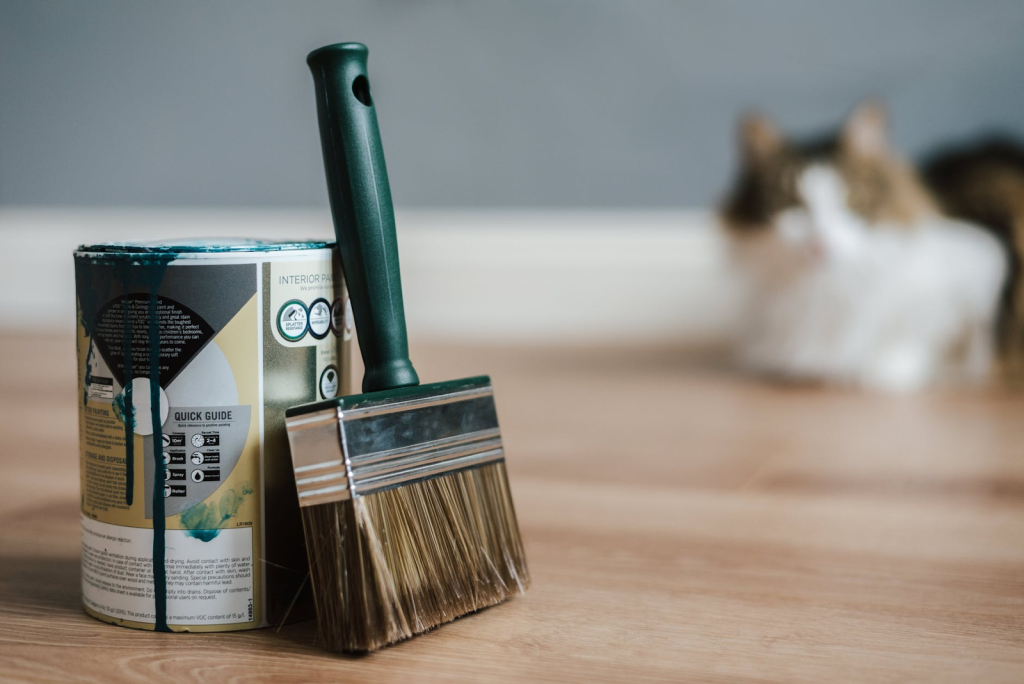How Long is Paint Good For?


The lifespan of paint depends on its type. But, on average, it takes one to ten years before the paint goes bad. When stored properly, unopened paint cans endure for years. On average, water-based and latex acrylic paints can last up to ten years of storage. On the other hand, oil-based and alkyd paints can last up to fifteen years of storage life. If the can of paint remains sealed, the components can disperse over time. The only difference it makes is how they are not associated with environmental factors. Even thermally insulated contents could be damaged if the can was situated in the garage or shed and froze or was exposed to severe weather conditions. We have rounded up the frequently asked questions about the lifespan of the paint. This will help you further understand the lifespan of paint and ways how to store them.
Can Old Paint Still be Used?
Sometimes, they can still be. To check, it would be best to open the can. If the paint appears to be in good condition and smells like paint as long as it does not have a nasty odor, give it a good stir. It’s generally not a good idea to use it if there’s a lot of sludge or bits that won’t mix in once you start mixing. A layer of paint scum, on the other hand, indicates that air has gotten into the can and the top coat of paint is drying. You can try to save it in this scenario by lifting off the dried covering and tossing it. Then thoroughly mix the paint and apply it.
How to Tell if the Paint Has Gone Bad?
Thick, spongy, or stinky of these descriptors indicate that your paint has begun to deteriorate. Repeated freeze-thaw cycles can cause paint to become lumpy, which means you won’t get the smooth, beautiful finish you desire when painting your walls. Paint with rotten odors is likely to have bacterial contamination, so you should never use paint that smells bad. If it smells bad in the can, it will smell bad on your walls, so skip this paint and purchase a new can. In general, it is reasonable to use separated paint. To revitalize the paint, simply turn the can upside down a few times, give it a gentle stir, or use a paint stick. If you’re unsure whether the paint can be used, go to a paint store and get an expert’s opinion.
How to Store Paint?
Keep leftover paint in a temperature-controlled environment between 50 and 90 degrees Fahrenheit. You don’t want it to freeze (hence the lack of a garage) or get too hot (so, preferably not the attic). Also, keep it away from any heat sources like a hot water heater, furnace, or direct sunlight. If you only have a minimal amount of paint left and don’t have space to store the can, some people like to pour leftover paint into a smaller repurposed plastic container with a twist lid. Keep the label or lid, however, as they comprise the product number, color specification, and product acceptance. When the time comes for touch-ups or a completely new look, you’ll be supplied with what you need.
What to Do with Leftover Paint?
Save it if it’s good. The easiest approach to keep latex paint fresh is to keep it in an airtight container to prevent the water from evaporating and bacteria from entering. You can either keep the paint in the can or move it to a clean jar with a screw-on cover. It should be kept at room temperature. That means you shouldn’t store it in a garage or shed, as the paint will be ruined by temperature variations. Label leftover paint so you’ll remember where you used it in the future. If the paint is no longer good for use, get rid of it. It’s critical to properly dispose of old paint that can’t be salvaged. Check your municipal or county government’s website or call your local department of public works to find out what to do in disposing of paint.
How to Extend the Shelf Life of Paint?
Whether you wish to conserve a single can of paint for touchups or you ordered too much and have a few unused gallons on your hands, store paint indoors, preferably away from extreme temperatures and exposure, for the longest shelf life. Place a piece of plastic wrap over the top of a half-empty can to keep the paint fresh, then tap the lid back into place with a hammer. While you’re at it, take notice of the date and the color description on the side for record purposes. When properly stored, unopened paint cans survive for years. It takes ten years before leftover water-based and latex acrylic paints go bad. They can still be used provided that they are thoroughly mixed when you are ought to use them again. On the other hand, a can of oil-based and alkyd paints can last up to fifteen years of storage life. When the can is left unopened for years, the composition of liquids and semi-solids tends to fracture over time because of the lack of exposure to natural factors.
